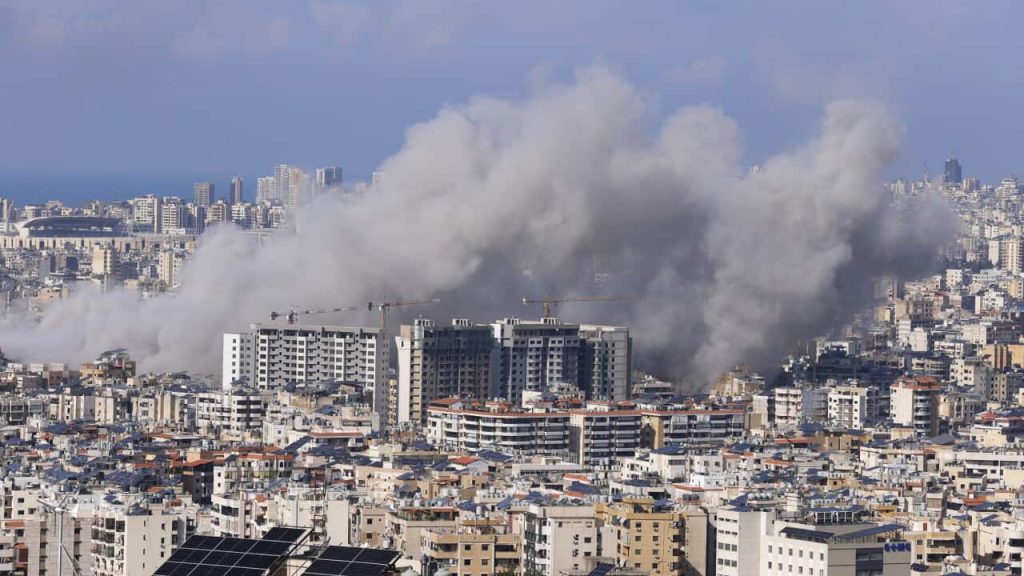Israeli Strikes on Lebanon and Hezbollah Attack in Israel
The Israeli military has launched airstrikes on the southern suburbs of Beirut, Lebanon, in one of its most intense daytime attacks on the area. Meanwhile, Hezbollah carried out an attack in Israel, resulting in casualties on both sides.
Israeli Airstrikes on Beirut
- Around a dozen strikes hit the southern suburbs of Beirut, killing 12 people according to the Lebanese health ministry.
- Residents have evacuated the area since Israel started bombing it in September.
- The Israeli military targeted Hezbollah positions in Beirut’s Dahiyeh area and claimed to have dismantled most of the group’s weapons and missile facilities.
- Israel accused Hezbollah of using civilians as human shields, a charge the group denies.
Hezbollah Attack in Israel
- Two people were killed in Nahariya, Israel, when a residential building was struck.
- Hezbollah claimed responsibility for a drone attack targeting a military base east of Nahariya.
- Israelis had to seek shelter from drone attacks across northern Israel, with one drone hitting a kindergarten yard in a Haifa suburb.
Escalation of Conflict
- The conflict between Israel and Hezbollah, backed by Iran, escalated following the Gaza war.
- Israel has launched numerous airstrikes in Lebanon, causing significant casualties.
- Israeli attacks have killed over 3,000 people in Lebanon, while Hezbollah attacks have resulted in casualties in northern Israel, the Golan Heights, and southern Lebanon.
New Israeli Defence Minister’s Stance
- Israel’s defense minister, Israel Katz, stated that there would be no ceasefire in Lebanon until Israel achieves its objectives.
- The goals include disarming Hezbollah, pushing the group beyond the Litani River, and ensuring the safe return of northern residents to their homes.
- Ceasefire talks have faced challenges in enforcement, despite some progress being made.
- The Lebanese government, inclusive of Hezbollah, has called for a ceasefire based on a UN resolution from 2006.
In conclusion, the ongoing conflict between Israel and Hezbollah has led to significant casualties and destruction on both sides, with no immediate prospect of a ceasefire. The situation remains volatile, with civilian lives at risk as the violence continues.
FAQ:
What is the current status of the conflict between Israel and Hezbollah?
The conflict has escalated, with Israeli airstrikes in Lebanon and Hezbollah attacks in Israel resulting in casualties.
What are Israel’s objectives in the conflict?
Israel aims to disarm Hezbollah, push the group beyond the Litani River, and ensure the safe return of northern residents to their homes.
What challenges have ceasefire talks faced?
Enforcement has been a major challenge in ceasefire talks, despite some progress being made in negotiations.

